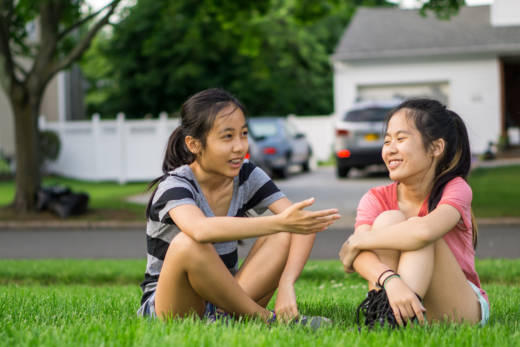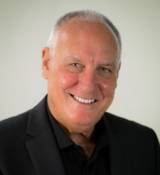That the transmission model has collapsed is clear. But it’s now time to take the more difficult step: To acknowledge that living a densely linked life and operating in a non-linear, intimately connected, globally diverse, culturally conflicted world with 16 million text messages exchanged every minute and knowledge itself becoming a social construct mediated by the whole requires entirely new thinking about learning itself.
What will replace the old model? There are three important clues—three sets of data from emerging science—that point us in the direction of a radically new notion of learning in the remainder of the 21st century and beyond.
First, consider that conventional evolutionary theory is being challenged by complexity, which assumes the primary unit of evolution is the organic whole, not the individual. This theory follows the rule of dynamic systems, in which chaotic patterns (and we have plenty now) accelerate until crisis reaches a penultimate stage and chaos resolves itself into a new order. In other words, the entire ‘building block’ notion of life, with a long evolutionary timeline and subtle changes in individual genes over many lifetimes, may be replaced by the notion of collective intelligence and evolution of the whole.
Second, there is increasing evidence that in our highly connected world the social environment interacts with human consciousness to create a social field of information. Like fish trying to see water, the field is invisible to us, but we learn from the field. It’s now our chief source of curriculum.
Third, experts in the field of social neuroscience assert that our relationship to the field can be mediated through an expression of empathy and openness. That may be why empathy has suddenly morphed beyond a narrow definition as a tolerant attitude into a deep interpersonal skill necessary for effective teaming, customer design, and other aspects of life that require openness to the flow of information.
What does this mean for education? In my view, it’s time to match the emerging science with the tempo of the times and upend established ‘truths’ around learning. It’s time to act on the assumption that knowledge is flowing through students, not being delivered to them, and that the chief skill is openness. That means, for the foreseeable future, empathy is learning. This is the game-changer. Anything less is a slow dance solution in a rock and roll world.
This may seem theoretical and far away from present school practices. But recall the complexity approach to evolution: More chaos indicates the problem is intensifying to the point of a sudden shift. We are not as far from a 21st century model of learning as we might believe. In fact, there are at least six ways that schools can get out in front of the shift:
Promote a Holistic, Non-Brain Centric View of Learning
Empathy be a behavior, but it has a physiological underpinning. In an empathetic state, the body relaxes and brain activity shifts to the higher centers. To an extent larger than generally realized, this shift is mediated by the heart. Further, the physiology of the heart—in the form of heart rate variability, which affects the messaging to the brain—is influenced by emotions. All the emotions associated with empathy, such as openness, humility, gratitude, and compassion, affect the heart positively.
View Empathy as the Foundation
Old schemata for learning, such as Bloom’s Taxonomy, need to be replaced by iceberg models that give us better insight into behaviors that matter in the world, including social awareness, self-awareness, and attitudes that lead to connection with others. This includes replacing the term ‘social-emotional’ learning, an industrial hangover from a time in which academic and social skills could be distinguished, with a strengths-based focus that binds intellect, passion, and skillfulness into a whole. Teaching SEL skills is on the rise, but teaching the core strength—openness, curiosity, and empathy—and acknowledging empathy’s fundamental role in cognition and achievement is the next step.
Turn Empathy into an Outcome
Empathy can be learned, demonstrated, and evaluated, but it needs to be defined in terms deeper than ‘I like others.’ Empathy is the first step in the design process. Empathetic behavior makes teams function better and can be identified in teamwork rubrics as active listening, open body posture, kind critique, and similar behaviors that can be assessed. Learning to be empathetic, however, does require the right conditions -- sitting in a row of desks and answering teacher questions doesn’t do it. Empathy is best learned through service or teams in a project-based environment.
Continue to Personalize Learning
The exact definition of personalized learning is a work in progress, but is a visible response to our intuition that the old model of learning no longer holds. The more that an individual is not confined to chapters in a text book or a set of lecture notes, and has 24/7 access to a broader field of knowledge, the more that learning becomes personal as well as collectivized. Many choices equal many paths equal multiple ways to become educated. This is a huge challenge for formal education, but unavoidable.
Recognize Teachers as Co-creators
With the learner at the center, the teacher is the facilitator. But education requires a serious build-out of this concept. In the new model, the real teacher is not a single person, but the social field, which leads to learning, but also awakens deeper levels of creativity and a desire for service. In the transmission model, learning is very much geared toward self-fulfillment; in the new model, we can expect empathy to shift the focus to the common good. Teachers will inevitably begin to apply their subject expertise to real-world demands for solutions, innovation, and problem solving. That’s really the outgrowth of an empathic model of learning: To make a positive difference in the world.
Get Students Out of the Classroom and into the World
In a world of collective ‘learning’, the standards-based approach will inevitably fail or undergo severe modification to focus on skillfulness rather than content. The replacement is ‘learning while doing’, hopefully in service to the greater good. Expect to see service learning, out of school social good projects, and opportunities for students to share their collaborative knowledge to explode over the next few years.



